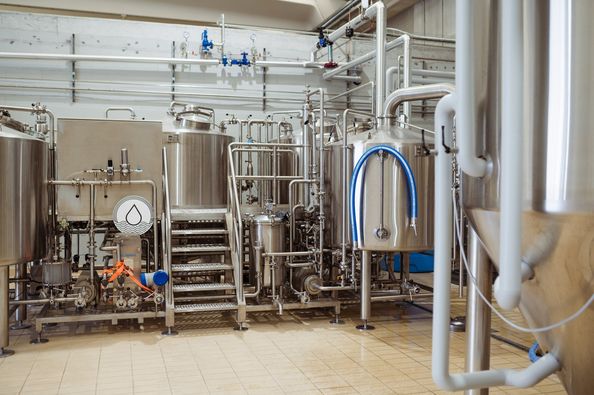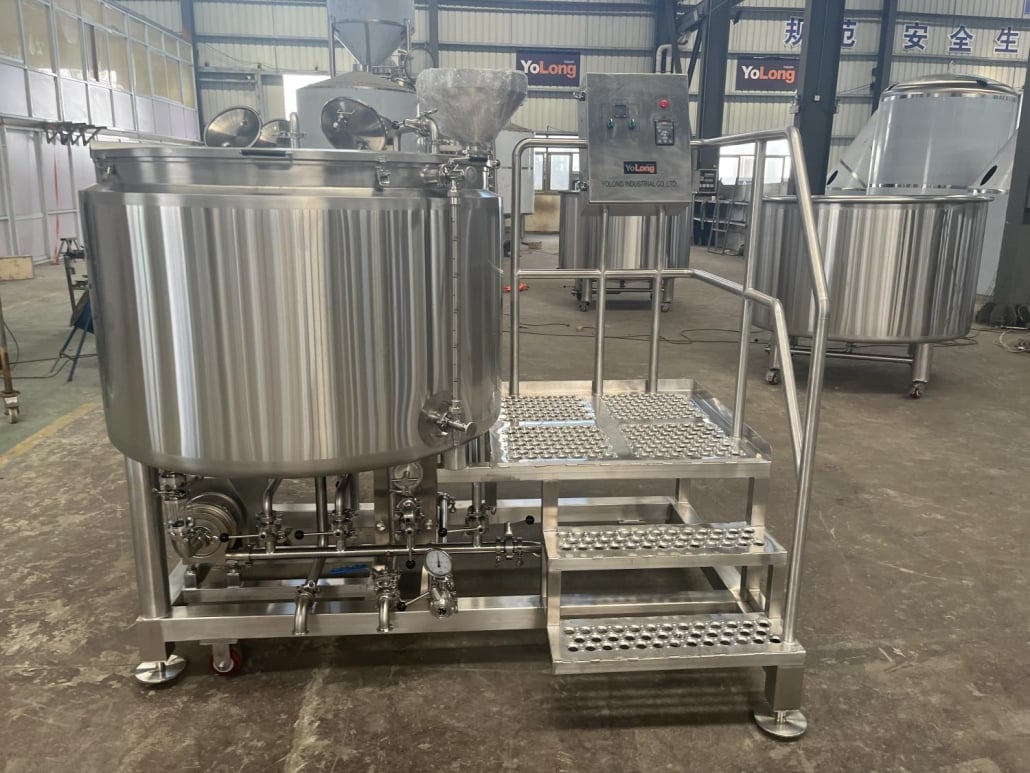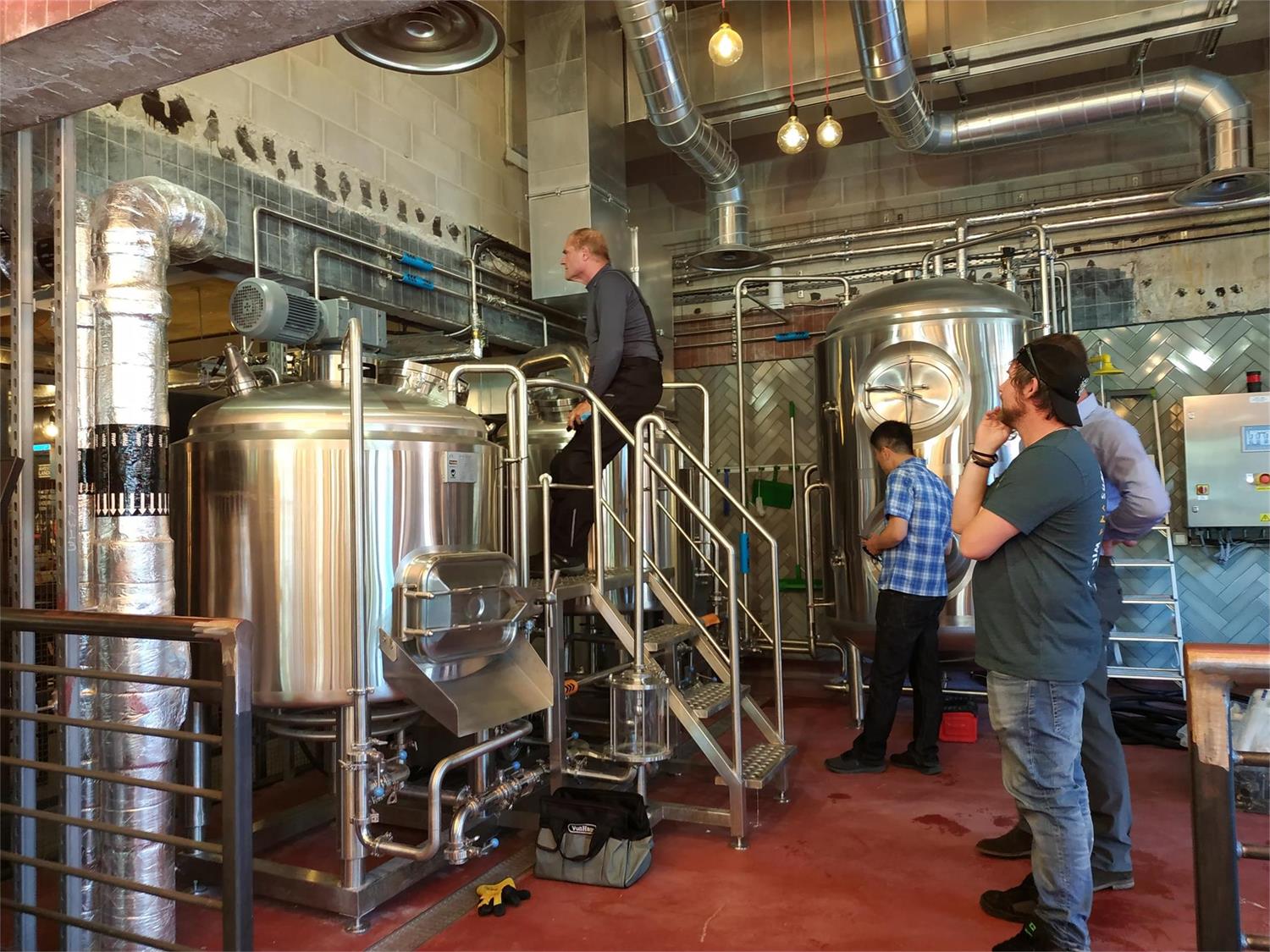The Ultimate Guide to a 500L Brewing System
Overview of the 500L Brewing System
A 500L brewing system is an ideal choice for craft brewers aiming to scale up production without diving into industrial-sized equipment. This system provides a perfect balance between large-scale efficiency and the artisanal touch that craft brewers cherish. In this guide, we’ll delve into the specifics of what a 500L brewing system entails, from the equipment needed to the brewing process, and help you understand the nuances of operating, maintaining, and choosing the right system for your needs.
Equipment Guide for a 500L Brewing System
When venturing into brewing with a 500L system, it’s crucial to understand the components involved. This section will provide a detailed guide on the essential equipment needed for a 500L brewing system.
Brewhouse Components
A typical 500L brewhouse setup includes several key components:
- Mash Tun: Used for mashing the grains, where starches are converted into fermentable sugars.
- Lauter Tun: This vessel separates the wort from the spent grains.
- Brew Kettle: Where the wort is boiled and hops are added.
- Whirlpool: Used for separating the wort from the solid particles post-boiling.
Fermentation Equipment
- Fermenters: These are tanks where the wort is fermented by yeast, turning it into beer.
- Bright Tanks: Used for conditioning and carbonating the beer before packaging.
Supporting Equipment
- Heat Exchanger: For rapidly cooling the wort before fermentation.
- Pumps: Essential for moving liquids between tanks.
- Control Panel: For monitoring and controlling the brewing process.

Table of Equipment Types
| Equipment | Description |
|---|---|
| Mash Tun | Vessel for mashing grains |
| Lauter Tun | Vessel for separating wort from spent grains |
| Brew Kettle | Where wort is boiled and hops are added |
| Whirlpool | Separates wort from solid particles post-boiling |
| Fermenters | Tanks for fermenting wort into beer |
| Bright Tanks | Used for conditioning and carbonating beer |
| Heat Exchanger | Rapidly cools wort before fermentation |
| Pumps | Moves liquids between tanks |
| Control Panel | Monitors and controls the brewing process |
The Brewing Process
Brewing with a 500L system follows a series of well-defined steps. Each step is crucial to ensure the final product is of high quality. Here’s a detailed look at the brewing process.
Mashing
In the mash tun, crushed grains are mixed with hot water to convert starches into fermentable sugars. The temperature and duration of this step are critical to the flavor and body of the beer.
Lautering
After mashing, the mixture is transferred to the lauter tun. Here, the liquid wort is separated from the spent grains. The wort is then collected and prepared for boiling.
Boiling
The wort is boiled in the brew kettle, and hops are added at various stages to impart bitterness, flavor, and aroma to the beer. Boiling also sterilizes the wort, removing any unwanted bacteria or wild yeast.
Whirlpooling
Post-boiling, the wort is sent to the whirlpool. This process helps separate the wort from the solid particles (trub) that form during boiling.
Cooling
The hot wort is rapidly cooled using a heat exchanger before being transferred to fermenters. Cooling must be efficient to prevent contamination and ensure yeast health during fermentation.
Fermentation
The cooled wort is transferred to fermenters, where yeast is added. Fermentation is the process where yeast converts sugars into alcohol and carbon dioxide, creating beer.
Conditioning
In bright tanks, the beer undergoes conditioning, where it is carbonated and matured to develop its final flavor profile.
Packaging
Finally, the beer is packaged into bottles, cans, or kegs for distribution and consumption.
Table of Brewing Process Steps
| Step | Description |
|---|---|
| Mashing | Mixing crushed grains with hot water to convert starches into sugars |
| Lautering | Separating liquid wort from spent grains |
| Boiling | Boiling wort with hops to impart bitterness, flavor, and aroma |
| Whirlpooling | Separating wort from solid particles post-boiling |
| Cooling | Rapidly cooling wort before fermentation |
| Fermentation | Yeast converts sugars into alcohol and carbon dioxide |
| Conditioning | Carbonating and maturing the beer |
| Packaging | Bottling, canning, or kegging the final product |
Capacity, Space, Design, and Customization
When selecting a 500L brewing system, understanding the capacity, space requirements, design, and customization options is vital. This section provides a detailed overview of these aspects.
Capacity
A 500L brewing system produces approximately 500 liters of beer per batch. This size is suitable for small to medium-sized craft breweries looking to increase production without moving to an industrial scale.
Space Requirements
The physical footprint of a 500L brewing system can vary, but typically, you will need a space of around 50-70 square meters. Consider additional space for storage, packaging, and any future expansion plans.
Design and Layout
The design and layout of your brewing system should facilitate smooth workflow and efficient use of space. Modular designs allow for flexibility and scalability. Ensuring easy access to all components for cleaning and maintenance is also crucial.
Customization
Many manufacturers offer customization options to meet specific brewing needs. Customizable features may include the number of vessels, automation level, heating methods (steam, electric, or direct fire), and aesthetic preferences.
Table of Capacity, Space, Design, and Customization
| Aspect | Details |
|---|---|
| Capacity | Produces approximately 500 liters of beer per batch |
| Space | Requires around 50-70 square meters |
| Design | Modular designs for flexibility and scalability |
| Customization | Options for vessel number, automation level, heating methods, aesthetics |
Suppliers and Price Range
Choosing the right supplier for your 500L brewing system involves considering various factors, including price, reputation, and support services. Here’s a guide to some well-known suppliers and their price ranges.
Top Suppliers
- BrauKon: Known for high-quality, custom-designed brewing systems.
- Ss Brewtech: Offers a range of brewing equipment with a focus on innovation and durability.
- Psycho Brew: Specializes in small to medium-sized brewing systems with excellent customer support.
Price Range
The price of a 500L brewing system can vary widely based on customization, automation, and included accessories. Generally, prices range from $50,000 to $200,000.
Table of Suppliers and Price Range
| Supplier | Price Range | Specialty |
|---|---|---|
| BrauKon | $80,000 – $200,000 | High-quality, custom-designed systems |
| Ss Brewtech | $50,000 – $150,000 | Innovative and durable equipment |
| Psycho Brew | $60,000 – $140,000 | Small to medium-sized systems with excellent customer support |
Installation, Operation, and Maintenance
Understanding the installation, operation, and maintenance of a 500L brewing system is crucial for efficient brewing and longevity of the equipment.
Installation
Installation typically involves setting up the brewhouse, connecting utilities (water, electricity, steam), and ensuring proper ventilation. Professional installation services are often provided by the supplier.
Operation
Operating a 500L brewing system requires a good understanding of the brewing process and the equipment. Automation can simplify operation, but hands-on knowledge remains essential for troubleshooting and quality control.
Maintenance
Regular maintenance is vital to ensure the system runs smoothly. This includes cleaning, inspecting for wear and tear, and servicing pumps and valves. Adhering to a maintenance schedule can prevent costly breakdowns.
Table of Installation, Operation, and Maintenance
| Aspect | Details |
|---|---|
| Installation | Setting up brewhouse, connecting utilities, ensuring proper ventilation |
| Operation | Understanding brewing process, equipment operation, automation |
| Maintenance | Regular cleaning, inspecting for wear, servicing pumps and valves |
How to Choose the Right Supplier
Choosing the right supplier for your 500L brewing system can make a significant difference in your brewing operations. Here are key factors to consider.
Reputation
Research the supplier’s reputation in the industry. Look for reviews, testimonials, and case studies from other breweries.
Support Services
Consider the level of support the supplier offers, including installation, training, and ongoing technical support.
Customization Options
Ensure the supplier can customize the system to meet your specific needs, from the number of vessels to automation levels.
Price and Value
While price is important, consider the overall value, including the quality of the equipment, the level of customization, and the support services provided.
Table of Choosing the Right Supplier
| Factor | Details |
|---|---|
| Reputation | Reviews, testimonials, case studies |
| Support Services | Installation, training, ongoing technical support |
| Customization | Number of vessels, automation levels, specific brewing needs |
| Price and Value | Overall value, quality of equipment, level of customization, support services |

Pros and Cons of a 500L Brewing System
Understanding the advantages and limitations of a 500L brewing system can help you make an informed decision.
Advantages
- Scalability: Ideal for small to medium-sized breweries looking to scale up production.
- Quality Control: Easier to maintain high quality and consistency compared to larger systems.
- Flexibility: Allows for experimentation with different beer styles and recipes.
Limitations
- Space Requirements: Requires a significant amount of space.
- Initial Investment: High initial cost for equipment and installation.
- Maintenance: Requires regular maintenance to ensure optimal performance.
Table of Pros and Cons
| Aspect | Advantages | Limitations |
|---|---|---|
| Scalability | Ideal for scaling up production | Significant space requirements |
| Quality Control | Easier to maintain high quality and consistency | High initial cost for equipment and installation |
| Flexibility | Allows for experimentation with different beer styles and recipes | Requires regular maintenance to ensure optimal performance |
FAQ
| Question | Answer |
|---|---|
| What is a 500L brewing system? | A brewing system with a capacity to produce 500 liters of beer per batch. |
| How much space is needed for a 500L brewing system? | Typically around 50-70 square meters. |
| What is the price range for a 500L brewing system? | Prices generally range from $50,000 to $200,000. |
| What are the key components of a 500L brewing system? | Mash tun, lauter tun, brew kettle, whirlpool, fermenters, bright tanks, heat exchanger. |
| How often should maintenance be performed? | Regular maintenance should be done following a schedule to prevent breakdowns. |
| Can the system be customized? | Yes, many suppliers offer customization options for specific brewing needs. |
Share this entry
Interested in learning more about Brewing Systems including additional details and pricing information? Please use the form below to contact us!
YOLONG BREWERY EQUIPMENT FAQS
- Commercial Brewery / Craft Brewery / Microbrewery / Nanobrewery
- What is The Difference Between Craft Beer and Industrial Beer?
- The Bespoke Differences In Custom Brewing Systems
- Everything You Need to Know About Kettle Souring
- How to Choose Brewing Equipment for Your business?
- How To Choose The-Best Partner To Build Your Commercial Microbrewing System?
- Two Detection Sensors That You Need To Use In Your Brewhouse System
- Remote Control Applications in Brewing Equipment/How does it work?
- How To Clean Your Brand New Brewery Tanks?

